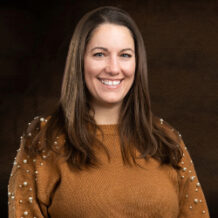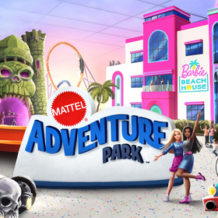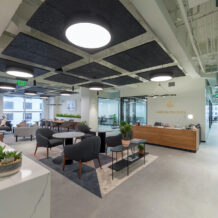Author: Sydney Moeller, Senior Associate + Interior Designer, with expert insight from Principal Chad Byerly of Baker Barrios Architects
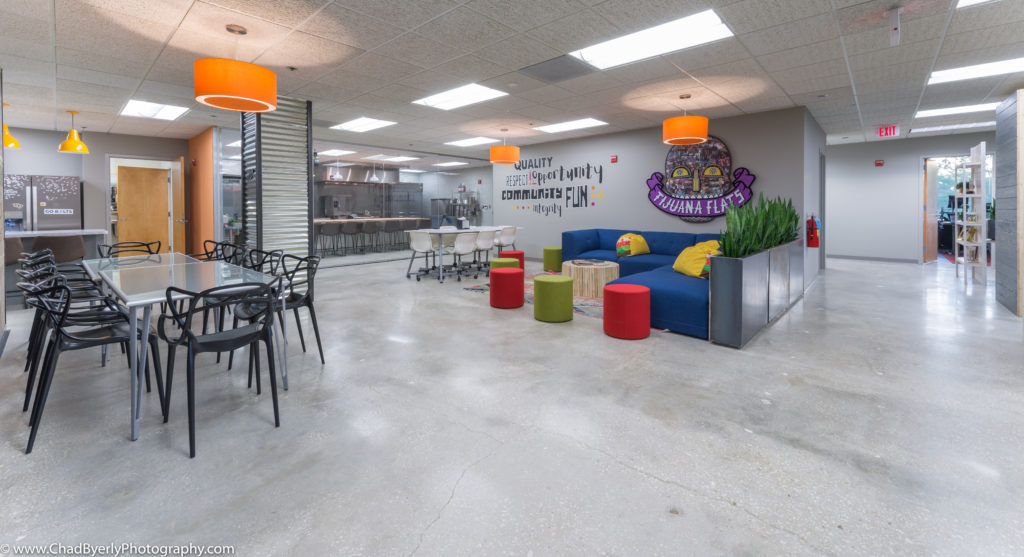
It is a cliche–the white walls, ugly carpet, and a motivational poster-littered break room. Anyone who has worked in a less-than-optimal office environment (or even those just familiar with the movie, Office Space) know the real drag a poor office design can be on morale, productivity and creativity in the workplace.
Though our title may suggest otherwise, the cubicle works for some offices. This is not a stink piece on more traditional, formal office environments, as they may work quite well for certain companies. Our goal with this blog post is simply to let you know that your office design does not have to follow conventions of the past or a template of what has come before.
Most importantly, an office design must make sense for the company. An open floor plan may sound like a hip way to set up an office, but if your team needs to step outside to take private client calls every 10 minutes, it may not be the right fit. Once you establish what the needs of your team are, you can begin looking at solutions to meet those needs, all while injecting some much-needed creativity, intrigue and, yes, fun to the workspace.
The first and most important fact to note is that “good” office design is not one-size fits all. Each office has different needs and each solution must be tailored to the client. With some expert insight from interior designer and principal of the workplace strategy team, Chad Byerly, we have compiled a handful of modern solutions that have worked for clients looking to shake up their office design and to kick down the cubicle for good.
4 Office Design Trends to Update Your Space
-
Let Lighting Go Natural:
Like the push for all-organic foods, there has been an increased awareness and appreciation for natural lighting. Though it went woefully underappreciated in the past, great office design understands that lighting has a powerful psychological impact on an entire team. Big windows open to nature that allow your team to get a mental breath of fresh air after staring at a computer monitor all day are a very welcome addition to most office designs. Additionally, taking advantage of sunlight can provide some savings on electricity consumption while also avoiding the unattractive, eye-tiring glow of fluorescent lighting.
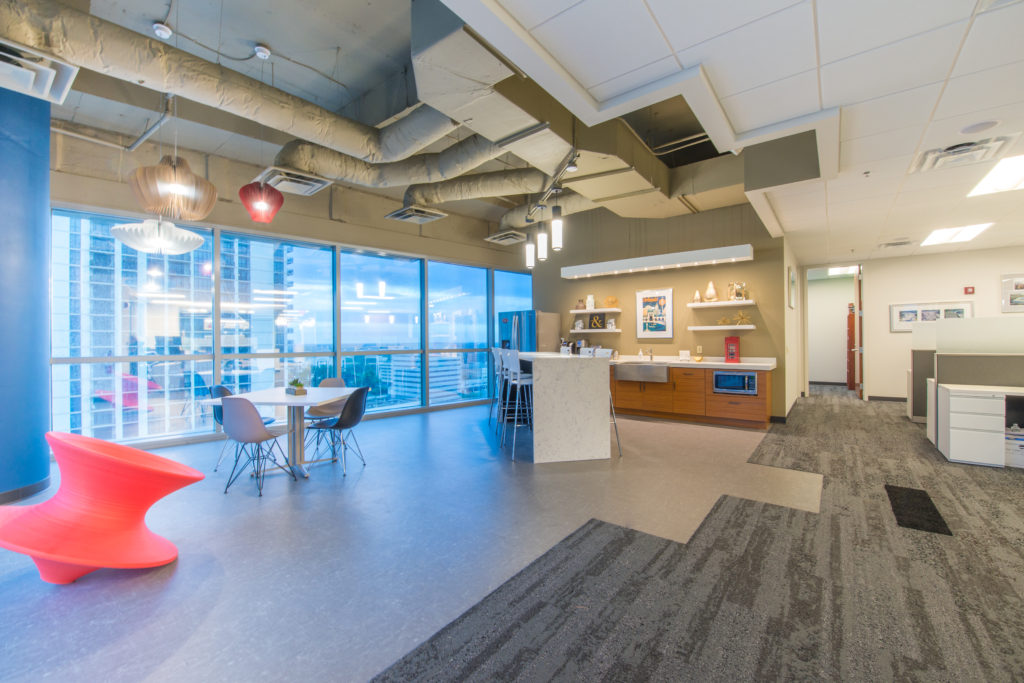
Example from Jordan Companies.
-
Authentic Materials:
What does your front door say about your company? How about the chairs in your lobby or coffee table in your break room? All of these elements can make a huge impact on telling the story of your brand. Choosing a heavily grained oak table over a brushed aluminum one should be a strategic decision based on more than simple aesthetics – it should be about telling your story. The materials you choose can start a conversation without saying a word–it is up to your office design to ensure they are providing an experience consistent with your brand.
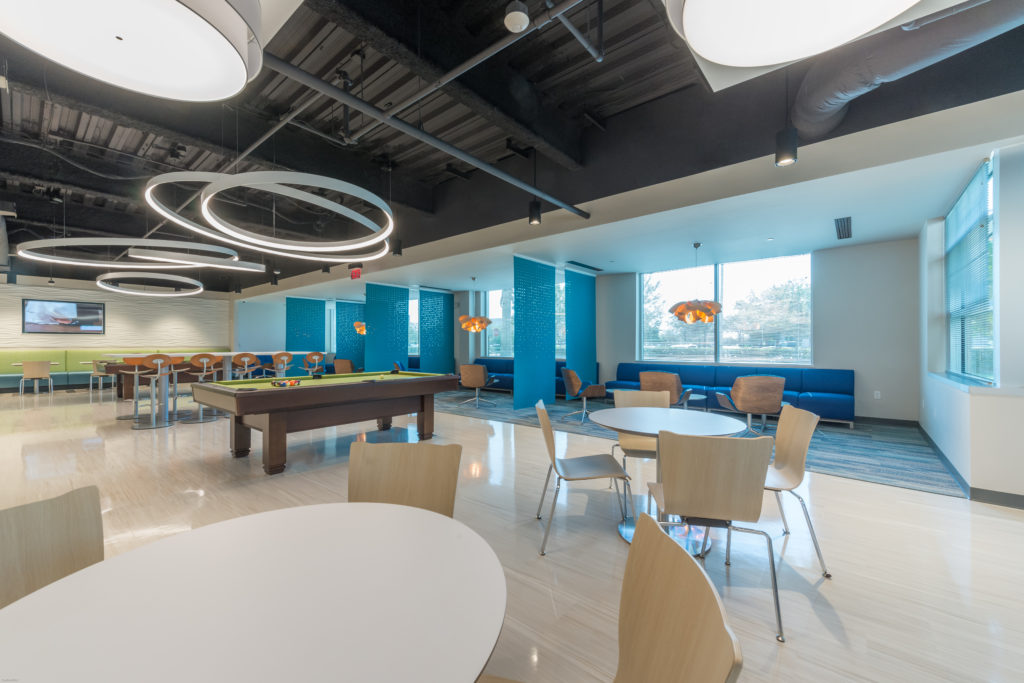
Example from Vistana Signature Experiences Operations Facility workspace environment.
This push for more “authentic” materials, particularly natural woods or hand-crafted pieces, is a direct reaction to the more bland cubicle style of yesteryear, which provided little to explore or engage with as either a visiting guest or as a team member who calls the office space home for nine hours a day.
-
Floating Desk Options:
As workstations have evolved from towering drawers of file folders and typewriters to a laptop and a smartphone, mobility has become more convenient than ever for the modern worker, spawning many a work-from-home policy and remote work allowance. Though many prefer having a home base within an office, it is often beneficial to have “floating” desks available for team members to get away from their traditional space and from other distractions to hone in on a single thought.
Instead of having to run out to Starbucks for the day, some offices feature special spaces that provide workers an escape that allows for the focus and environmental change that people often look for when hitting creative roadblocks.
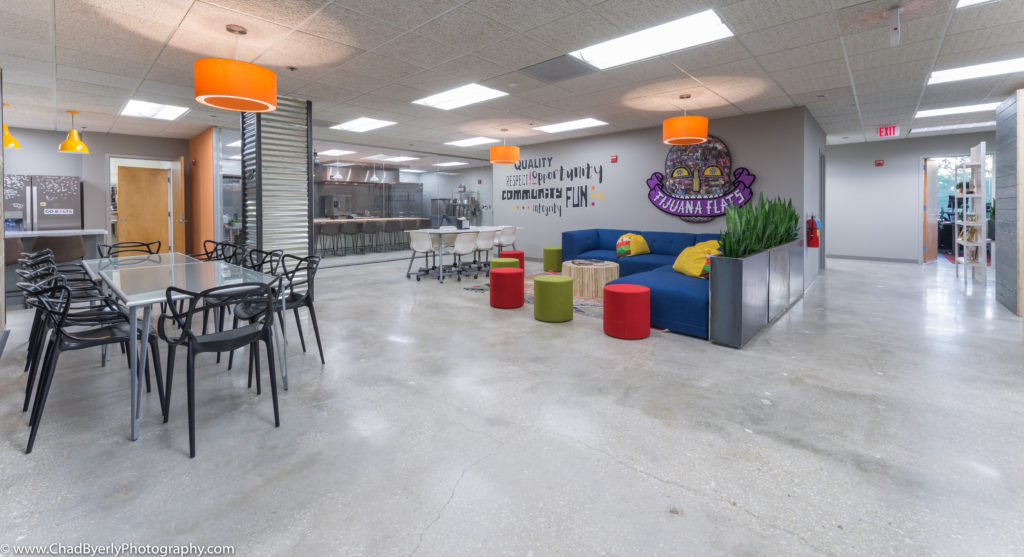
Example from Tijuana Flats workspace.
For all the benefits of open-concept offices, sometimes they become heavy headphone use zones. To combat this, we have seen office designs that encourage a dull roar of conversation, activity, and interaction in the open areas, but also provide designated no-talk, no-music, no-distraction and no-conversation zones for people to go heads-down when necessary. This level of flexibility is extremely important to keep everyone happy and productive, no matter the task at hand.
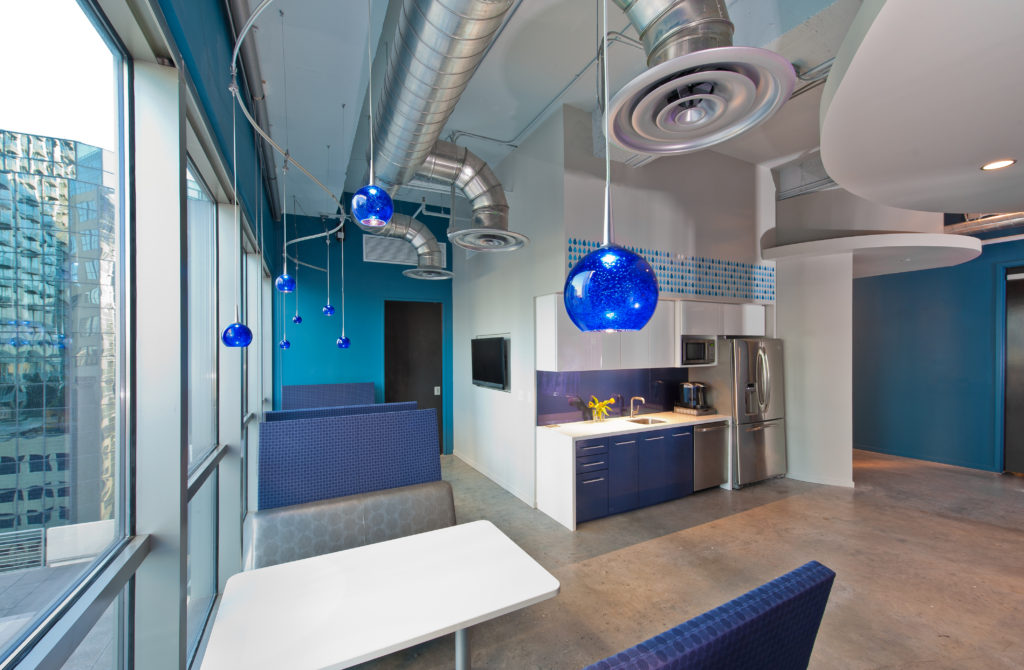
Example from Aquatic Design Engineering.
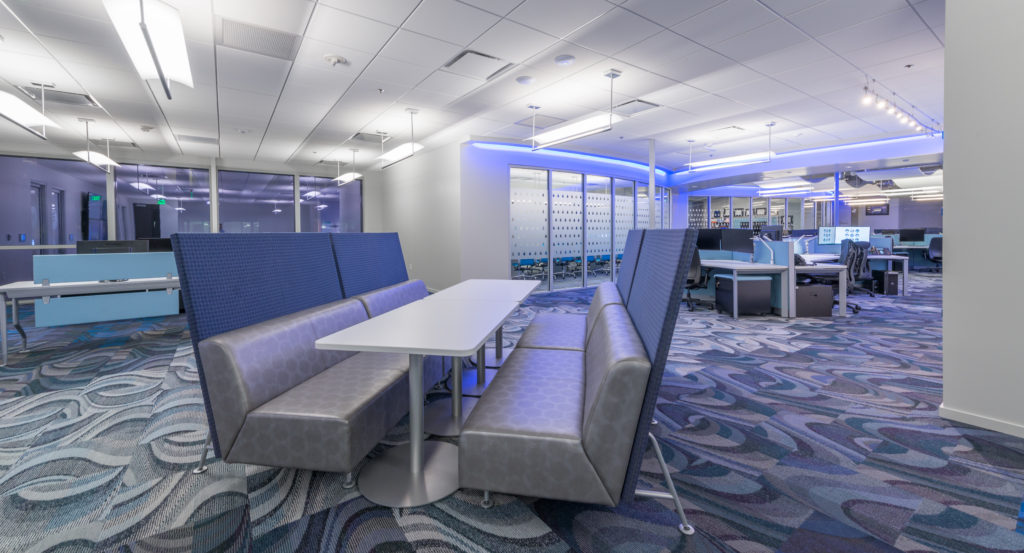
Example from Aquatic Design Engineering.
-
Bring Home to the Office:
Though ping pong and foosball tables have been “hip” office staples for decades, we have seen a push to bring more elements from home into the workplace. Skateboards, guitars, lava lamps, a poster of blues icon, Stevie Ray Vaughan (featured prominently at Baker Barrios Architects’ Orlando office) are all welcoming, psychologically comforting elements that may help keep your office from becoming too stiff.
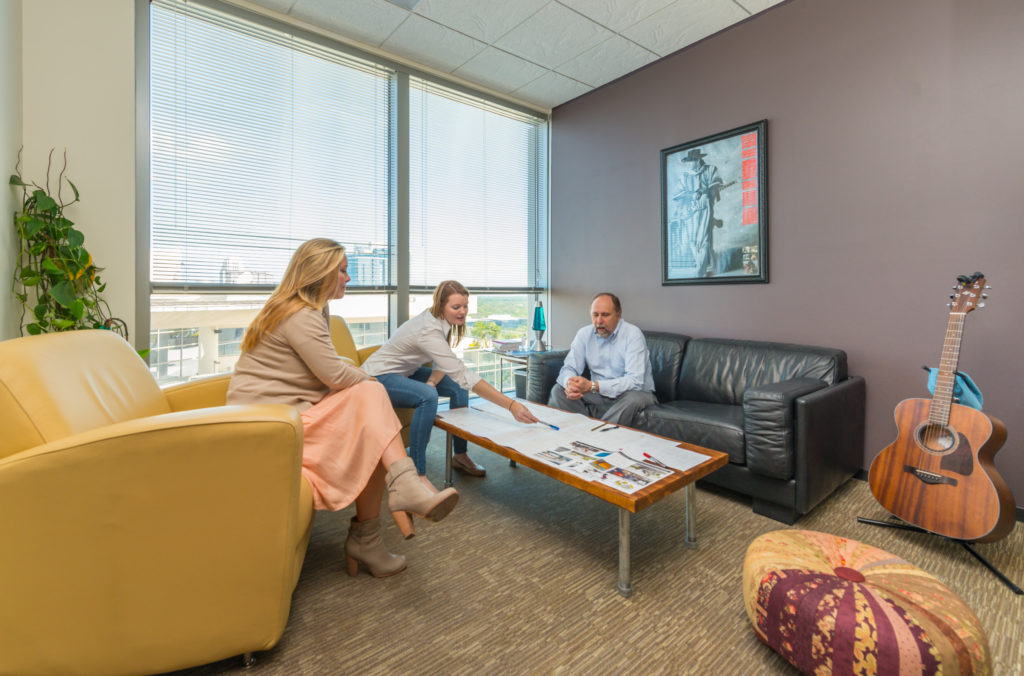
The “Viking Lounge” in our office incorporates a sofa, comfortable chairs, a guitar and lava lamp for a little R&R.
Now, you should probably avoid leaving your skateboard in the conference room and put the lava lamp away during that important client meeting, but having a decompression room full of these comforting personal items, even if just for five minutes, can be hugely important to recharging your team.
Again, every office design is different–each provides a unique set of challenges to overcome and desires to meet. However, the above four trends have been popular for many of our clients, and for good reason; each can help keep your team stay engaged, productive and mentally limber enough to take on the day’s tasks. When designing or redesigning your office, consider natural lighting, interesting and authentic materials, alternative desk options and personal touches from home to ditch the drab office designs of workplaces past.

